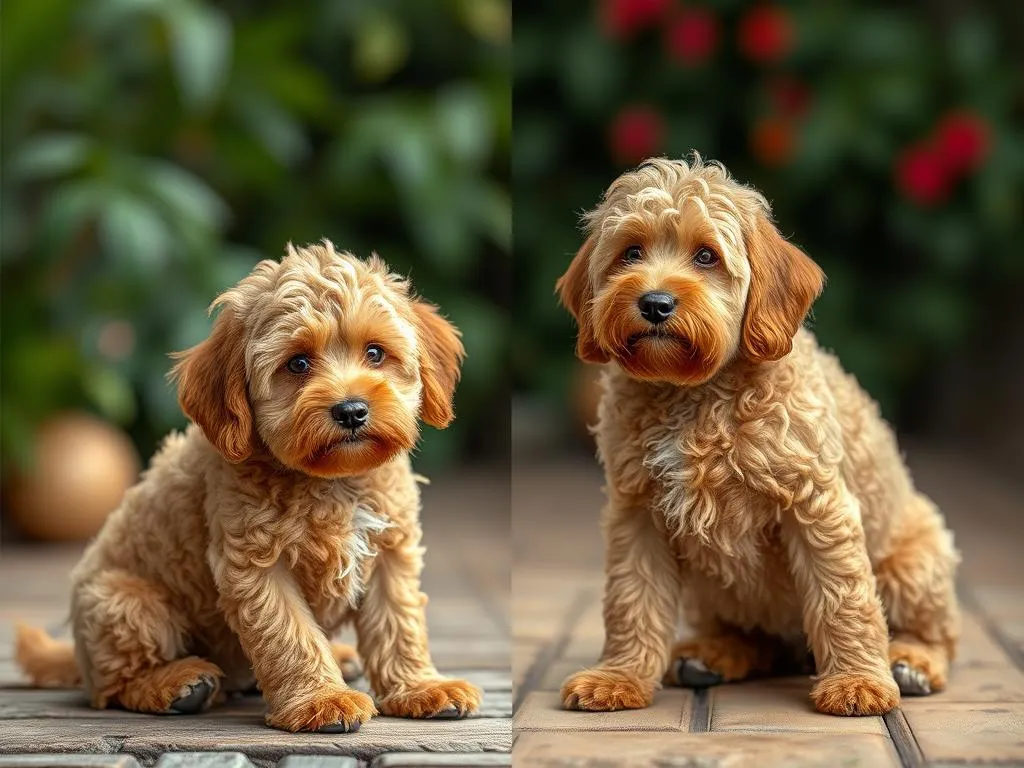
The world of mixed breed dogs has exploded in popularity over the past few decades, and for good reason. These lovable companions often combine the best traits of their parent breeds, making them delightful additions to any family. Among the most sought-after mixed breeds are the Cavapoo and Cockapoo. Both of these breeds boast charming looks and affectionate temperaments, but they also have unique characteristics that set them apart. Understanding these differences and similarities is essential for anyone considering bringing one of these adorable pups into their home.
Understanding Cavapoos
Origin and History
The Cavapoo is a delightful mix between the Cavalier King Charles Spaniel and the Poodle. The Cavalier is known for its friendly disposition and affectionate nature, while the Poodle adds intelligence and a hypoallergenic coat. This blend emerged in the early 1990s, as breeders sought to create a companion dog with the best attributes of both breeds. The result was the Cavapoo, a dog that quickly gained fame for its loving personality and low-shedding fur.
Physical Characteristics
Cavapoos typically range from 9 to 14 inches in height and weigh between 10 to 25 pounds. Their size can vary depending on whether they are bred from a toy or miniature Poodle. The coat is another highlight, often displaying a soft, wavy texture that comes in various colors, including cream, apricot, chocolate, and black. One of the most distinctive features of the Cavapoo is their expressive eyes and sweet, rounded face, which can easily melt anyone’s heart.
Temperament and Behavior
In terms of personality, Cavapoos are known for their friendly, affectionate nature. They thrive on companionship and are generally good with children and other pets, making them an ideal family dog. Their energy level is moderate; they enjoy playtime but are also content to cuddle on the couch. Cavapoos are typically eager to please, which makes them relatively easy to train.
Health and Lifespan
Cavapoos have an average lifespan of about 12 to 15 years. However, like any breed, they can be prone to some health issues. Common concerns include hip dysplasia, ear infections (due to their floppy ears), and certain heart conditions inherited from the Cavalier lineage. Regular veterinary check-ups and a healthy diet can help mitigate these risks.
Understanding Cockapoos
Origin and History
The Cockapoo is a delightful combination of the Cocker Spaniel and the Poodle. This charming breed has been around since the 1960s, making it one of the first designer dogs. The Cocker Spaniel contributes a friendly and playful demeanor, while the Poodle enhances intelligence and low-shedding capabilities. Over the years, Cockapoos have become beloved family pets, celebrated for their loyalty and affectionate nature.
Physical Characteristics
Cockapoos generally stand between 10 to 15 inches tall and weigh around 15 to 30 pounds, making them slightly larger than Cavapoos. Their coats can vary widely, from straight to curly, and come in a multitude of colors, including black, brown, cream, and even merle patterns. Like Cavapoos, Cockapoos are known for their adorable faces, characterized by large, expressive eyes and a cheerful demeanor.
Temperament and Behavior
Cockapoos are often described as friendly, playful, and intelligent. They love to engage with their families and are known for their social nature. Their energy levels are high, and they require regular exercise to keep them mentally and physically stimulated. Cockapoos generally get along well with children and other pets, making them a great choice for families.
Health and Lifespan
The average lifespan of a Cockapoo is similar to that of a Cavapoo, typically ranging from 12 to 15 years. However, they can also face health challenges, such as hip dysplasia, allergies, and certain eye conditions. Regular health check-ups and a balanced diet can help ensure a long, healthy life for your Cockapoo.
Comparing Cavapoos and Cockapoos
Size and Physical Traits
When contrasting Cavapoos and Cockapoos, size is one of the most notable differences. While both breeds are small to medium-sized dogs, Cockapoos tend to be slightly larger and heavier.
| Trait | Cavapoo | Cockapoo |
|---|---|---|
| Height | 9 to 14 inches | 10 to 15 inches |
| Weight | 10 to 25 pounds | 15 to 30 pounds |
| Coat Type | Wavy | Curly to straight |
| Common Colors | Cream, apricot, black | Black, brown, cream |
Temperament and Personality
Both breeds share a friendly and affectionate temperament, but there are subtle differences. Cavapoos are generally calmer and more laid-back, while Cockapoos are more energetic and playful. Both breeds thrive on companionship and are known for their loyalty to their families.
Trainability and Intelligence
Both the Cavapoo and Cockapoo inherit intelligence from their Poodle lineage, making them relatively easy to train. However, Cockapoos may require more consistent training due to their higher energy levels. Positive reinforcement methods work well for both breeds, and early socialization is crucial for developing well-rounded dogs.
Exercise and Activity Needs
In terms of exercise requirements, both breeds need regular physical activity. Cavapoos generally need about 30 minutes of exercise per day, while Cockapoos may require slightly more due to their active nature. Daily walks, play sessions, and mental stimulation activities like puzzle toys are ideal for both breeds.
Grooming and Maintenance
Grooming is essential for both Cavapoos and Cockapoos due to their coats. Regular brushing is necessary to prevent matting, and professional grooming every 6 to 8 weeks is recommended. While both breeds may incur similar grooming costs, Cockapoos may require slightly more maintenance due to their thicker coats.
Ideal Living Situations
Best Environments for Cavapoos
Cavapoos adapt well to various living situations, from apartments to houses with yards. Their moderate energy levels make them suitable for families with children or older individuals who enjoy a quieter lifestyle. They thrive in environments where they can receive plenty of love and attention.
Best Environments for Cockapoos
Cockapoos are also adaptable but tend to thrive in more active households. They enjoy having space to run and play, making homes with yards ideal for their energetic nature. Families who engage in outdoor activities or have children will find Cockapoos to be a perfect match.
Cost of Ownership
Initial Costs
When considering the cost of ownership, initial expenses can vary. Cavapoos typically range from $1,500 to $3,000, while Cockapoos can cost between $1,000 and $2,500. These prices can fluctuate based on breeder reputation and location.
Ongoing Costs
Ongoing expenses for both breeds are relatively similar. Food, grooming, and healthcare costs should be budgeted. Expect to spend approximately $30 to $60 monthly on high-quality dog food and around $50 to $100 for grooming services every couple of months.
Training Costs
If professional training is needed, costs can vary widely. Basic obedience training can range from $100 to $300, depending on the program and location. Investing in training is beneficial for both breeds to ensure they become well-behaved companions.
Making the Right Choice
Factors to Consider
When choosing between a Cavapoo and a Cockapoo, it’s essential to consider your lifestyle, family dynamics, and personal preferences. If you prefer a calmer, more laid-back dog, a Cavapoo may be the better option. Conversely, if you’re looking for a more energetic and playful companion, a Cockapoo could be the right fit.
Personal Testimonials
Many dog owners have shared their experiences with both breeds. Cavapoo owners often highlight their gentle nature and adaptability, while Cockapoo owners rave about their playful spirit and affectionate demeanor. Both breeds have their loyal fan bases, contributing to their popularity as family pets.
Conclusion
In summary, both Cavapoos and Cockapoos offer unique qualities that make them delightful companions. Whether you prefer the calm, affectionate nature of a Cavapoo or the energetic, playful personality of a Cockapoo, understanding their differences and similarities can help you make an informed choice. Ultimately, the best dog for you will depend on your lifestyle, family dynamics, and personal preferences. Choosing either breed will undoubtedly bring joy, love, and companionship into your life.









